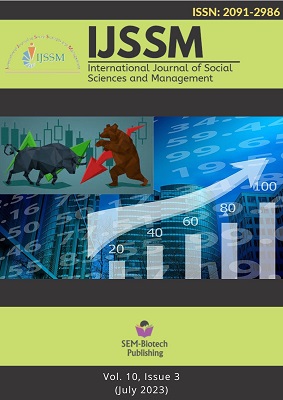Stock Selection and Market Timing Ability of Nepalese Mutual Funds
DOI:
https://doi.org/10.3126/ijssm.v10i3.55630Keywords:
: Mutual Funds; Portfolio Management; Stock Selection; Market Timing; Nepalese Stock MarketAbstract
This study evaluates the performance of Nepalese mutual fund managers’ stock selection and market timing abilities. This study performed the investigation on the weekly data of 5 mutual funds from December 28, 2017 to March 2, 2023 spanning 270 weeks. To serve our objective, the stock selection skills of the fund managers were assessed using average return, Sharpe ratio, Treynor ratio, Information ratio and Jensen’s alpha. The study found strong evidence supporting risk management ability in all of the mutual fund schemes as demonstrated by beta coefficient below unity and significant stock selection ability in 2 out of the 5 mutual fund schemes. Furthermore, the positive values of alpha although not statistically significant indicates stock selection ability of the fund managers. On the other hand, Treynor and Mazuy’s Unconditional Market timing model was employed to test the market timing skill of fund managers. The test results did not indicate any significant positive market timing skills but one of the mutual fund schemes exhibited statistically significant negative market timing. Thus, the Nepalese fund managers aptly demonstrated stock selection ability but they did not demonstrate any positive market timing skills indicating that fund managers typically relied on stock selection to outperform the Benchmark Index rather than market timing skills.
Int. J. Soc. Sc. Manage. Vol. 10, Issue-3: 47-54.
Downloads
Downloads
Published
How to Cite
Issue
Section
License
Copyright (c) 2023 International Journal of Social Sciences and Management

This work is licensed under a Creative Commons Attribution-NonCommercial 4.0 International License.
This license enables reusers to distribute, remix, adapt, and build upon the material in any medium or format for noncommercial purposes only, and only so long as attribution is given to the creator.




